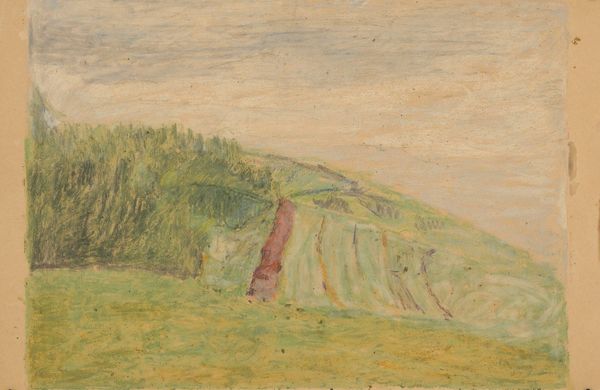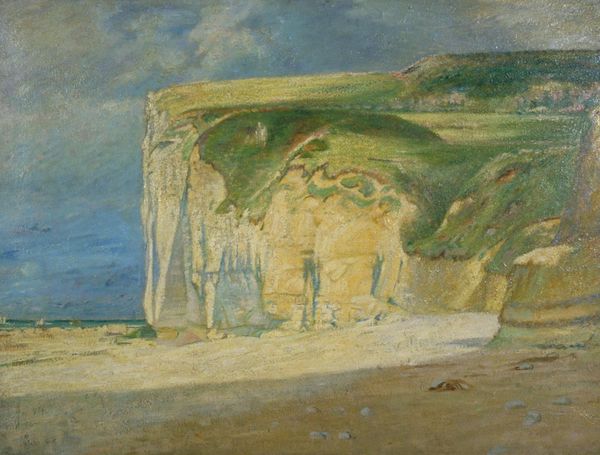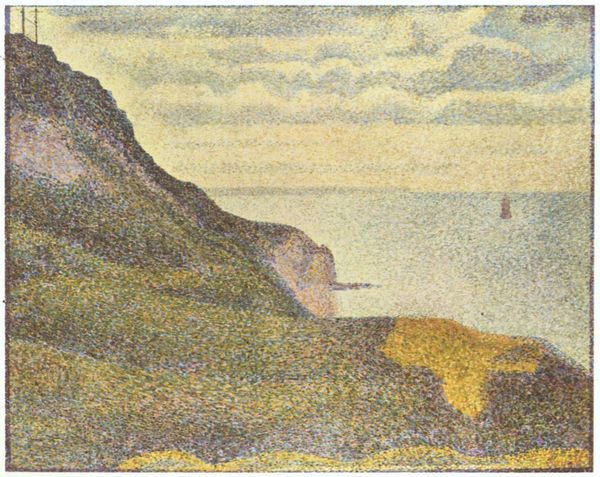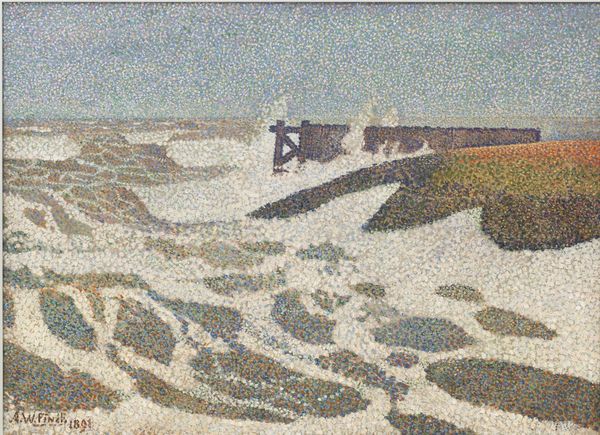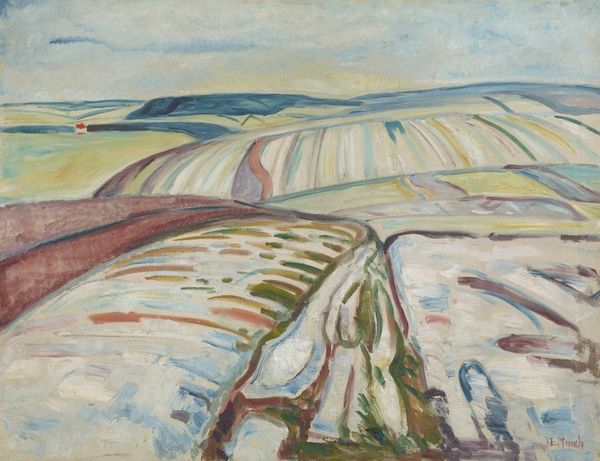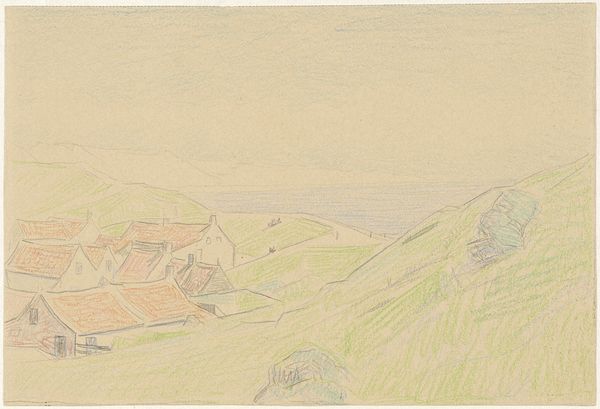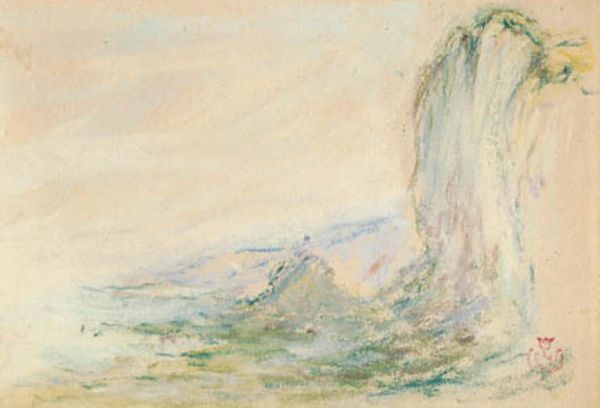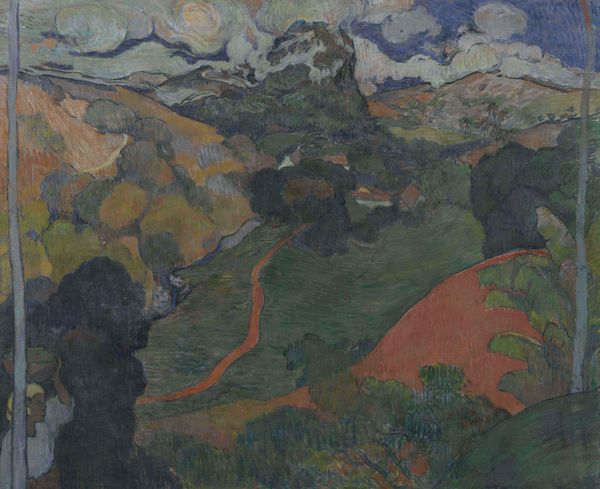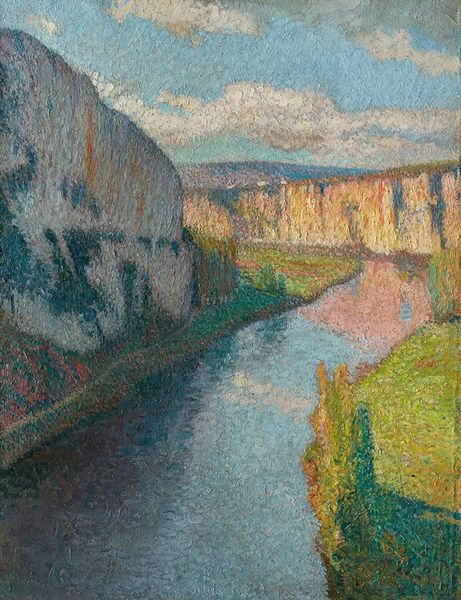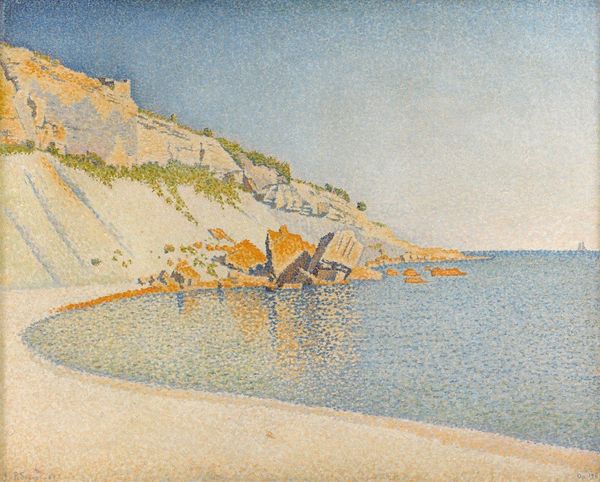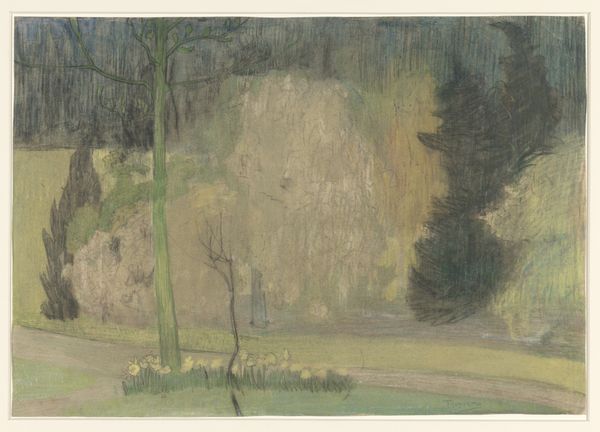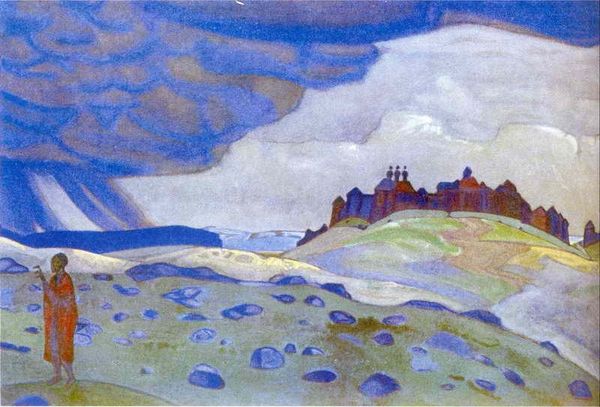
Copyright: Public domain
Curator: This is Alfred William Finch's "The Cliffs of Dover; The Cliffs at South Foreland," an oil painting created in 1892. What strikes you first about it? Editor: The sheer texture! It feels almost tactile. All those little dots of color shimmering in the light; you can practically feel the coastal mist on your skin. Curator: Finch, deeply embedded in Post-Impressionism, uses Divisionism, that application of distinct dots of colour, to create the image. He lived in Belgium and Finland and here, seemingly on the coast of England, the cliff’s whiteness perhaps signifies the English colonialism of that era; the divisionism is not just an artistic method but a reference to the social divisions of Europe at the time, too. Editor: Fascinating. Speaking formally, the pointillist application of paint really allows light to enter the composition in an unconventional way, especially when viewed from a distance, dissolving forms into light and shadow. Observe how the complementary blues and oranges intermingle to generate a vibrant visual experience and the atmospheric perspective gives a real sense of depth to the scene. Curator: Certainly. It’s interesting to view this through the lens of labour and leisure. Impressionism, and movements following, can often be viewed as products of increasing urbanisation, the slow emergence of the working class and even increasing demands and movements of and for female empowerment. Do you feel those narratives are at play in this image? Editor: That’s an interesting concept. While such theories offer one interpretation, one might also look closely at Finch’s skillful command of colour theory to explore his mastery of Divisionist technique within landscape painting; to study the very structures that produce meaning through visuality. Curator: Undoubtedly both considerations allow deeper readings of Finch’s artistic contribution to the late 19th Century art scene, a fascinating insight into the complexities of modern life. Editor: A final glance reveals how Finch uses such small, specific gestures and hues of light and colour to generate and offer viewers so many intricate forms that cohere as a whole image. It’s just amazing to observe!
Comments
No comments
Be the first to comment and join the conversation on the ultimate creative platform.
